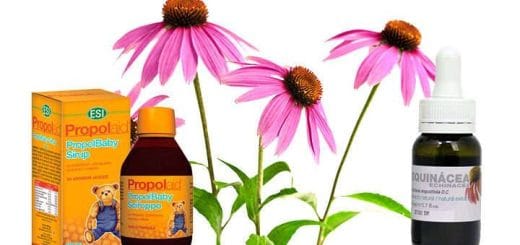The passionflower is a medicinal plant with properties and benefits as a natural tranquilizer. It reduces nervousness and helps with sleep at night. The flowers can be purchased in tablet form with pure dry powder, as well as fresh for making infusions along with valerian, or using the extract in drops.
Contents
- 1 Passionflower properties
- 2 Composition
- 3 Passiflora incarnata
- 4 Passiflora caerulea
- 5 Side effects
- 6 Contraindications
- 7 Passionflower in tablets
- 8 Passionflower infusion
- 9 Other related medicinal plants
- 10 Passionflower and valerian
- 11 Taking it with linden
- 12 With St. John’s Wort
- 13 Is it better to take passionflower in drops or in tablets and capsules?
- 14 Is it safe for children?
- 15 Passionflower dosage
- 16 How long should a natural sedative be taken?
- 17 Rebound effect when stopping daily dosage
Passionflower properties
Its scientific name is “Passiflora incarnata L.” or “Passiflora caerulea L.” It is also widely known as passion flower. It is a central nervous system relaxant due to its active compounds that inhibit excitation, but it also contains antioxidants and flavonoids that are highly beneficial for health.
However, the most valued aspect of this medicinal plant is its ability to relax and calm during periods of stress. Below are all the passionflower properties: 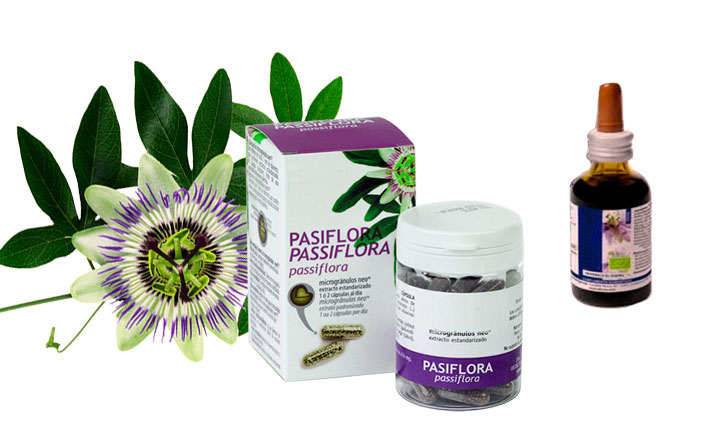
- Reducing anxiety.
- Eliminating nervousness.
- Inducing sleep, aiding in sleeping and resting at night.
- Minimizing withdrawal effects from drugs and medications.
- Improving sleep quality.
- Treating hysteria.
- Neurasthenia or states of sadness.
- Relieving distress.
- Reducing palpitations.
- Improving menopause symptoms.
- Helping to manage stressful situations.
There are many varieties and types of passionflower, but the most notable are Incarnata and Caerulea, both referred to as “passion vine.” These are the most commonly used due to their ease of cultivation—they grow in many parts of the world—as well as their mild yet remarkable narcotic effects, which are highly beneficial for nervous or insomniac individuals. Below, we explain the characteristics of each.
Composition
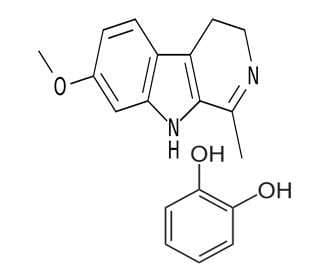
- Harmin.
- Harmane.
- Harmol.
- Catechol.
- Pectin.
- Vitexin and other flavonoids.
- Harmaline.
- Vitexin.
Since it reduces anxiety and nervousness, the composition of passionflower is ideal for alleviating tremors, worries, and intrusive thoughts, which are common in cases of depression, bipolar disorder, or stressful periods. It helps improve test performance and aptitude exams as well as making it easier to cope with family problems.
Its alkaloids interact with the nervous system and dopamine benefits and function as well as low serotonin levels in the bloodstream. Specifically, harmin is a monoamine oxidase A (MAO-A) inhibitor. It slows down the breakdown and destruction of neurotransmitters. This is useful for many individuals with psychological disorders, as it has a direct connection with serotonin reuptake inhibitors (SSRIs). However, caution is advised when taking passionflower alongside these medications. In many cases, it is contraindicated to consume it simultaneously with antidepressants, as it may enhance the effects of both.
Passiflora incarnata
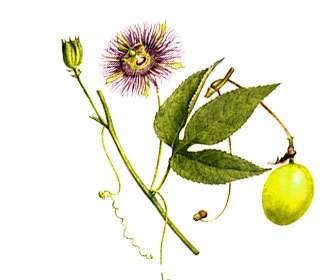 With this name, we refer to one of the most commonly used and marketed varieties of Passionflower or passion flower. Passiflora incarnata is a climbing plant with rapid growth and abundant flowering.
With this name, we refer to one of the most commonly used and marketed varieties of Passionflower or passion flower. Passiflora incarnata is a climbing plant with rapid growth and abundant flowering.
Its flowers are white, about 5 cm in diameter, and the properties and benefits of passiflora incarnata include:
- Anxiolytic effects.
- Relaxing properties.
- Hypotensive effects.
- Mild antiseptic properties.
- Calming effects.
It contains a rich variety of phenols, flavonoids, antioxidants, and essential oils that induce sleep. Passiflora incarnata is widely used by those who have difficulty falling asleep or experience frequent nightmares.
Additionally, just like Caerulea, it is effective in reducing anxiety or preventing its onset in certain situations.
Passiflora caerulea
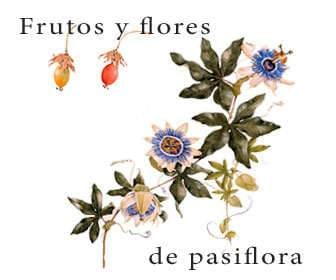 Very similar to Incarnata, this is a vine that is very easy to cultivate. It grows quickly and blooms profusely, producing many seeds.
Very similar to Incarnata, this is a vine that is very easy to cultivate. It grows quickly and blooms profusely, producing many seeds.
The part used in Passiflora caerulea is the dried flowers. These can be added to prepare an infusion or used in dry extract form. This way, it is much more potent, its sedative effects are more noticeable, and the person taking it experiences well-being and relaxation.
Passiflora caerulea is also known as passionflower or passion vine. These names are used interchangeably for all types of passionflower.
The difference between Caerulea and Incarnata is the size of the flowers. The former can reach a diameter of 10 cm, slightly larger than the latter. Additionally, the flower color is yellow or orange, contrasting with the whitish-yellow color of the others.
This type of medicinal plant can be cultivated year-round in temperate climates, blooms easily, and is therefore an invaluable source for treating ailments and disorders of the central nervous system (CNS).
Side effects
It is generally well tolerated and does not cause adverse reactions. One of the advantages of this plant and its flowers, or even its capsules, is that it is gentle on metabolism and easy on the stomach. However, some individuals may have hypersensitivity to its composition and experience passionflower side effects:
- Stomach discomfort.
- Nausea.
- Abdominal bloating.
Contraindications
- Treatment with serotonin reuptake inhibitors.
- Antidepressants.
- Anxiolytics.
- Infants.
- Breastfeeding.
- Pregnancy.
In general, adults can take it, but caution should be exercised if you are undergoing psychological or psychiatric treatment. Passionflower effects may enhance those of medications, especially those used to treat depression and anxiety. The mechanism of action of Passiflora incarnata and caerulea has contraindications. It induces sleep and relaxation, as do most medications for these conditions. Therefore, it is advisable to consult your doctor if you wish to take it while using other sleep aids or sedatives.
At the same time, although muscle relaxants target a different biological pathway in the body, they can interact with the sleep-inducing effects or, in some cases, cause excessive drowsiness.
Although it can be given to children, its alkaloid content is not particularly suitable. Consult a pediatrician before using it for babies or children, as well as if you are breastfeeding or pregnant.
Passionflower in tablets
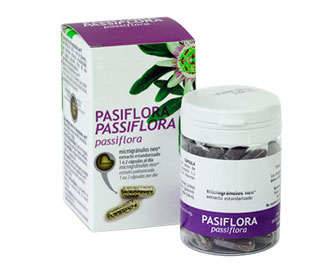 As mentioned earlier, there are two common ways to consume it. The first is as an infusion, and the other, more convenient option, is to take passionflower in tablet form.
As mentioned earlier, there are two common ways to consume it. The first is as an infusion, and the other, more convenient option, is to take passionflower in tablet form.
The advantages of capsules or tablets include avoiding the need to heat water or store plant parts in a dry, dark, and moisture-free place. Passionflower tablets can be taken anywhere, easily transported, and, for example, consumed during lunch at work or in class.
The main benefit of these is their sedative effect. In this regard, they are even stronger than passionflower incarnata L. infusions.
This is because each capsule contains dry, ground, and concentrated powder. In general, plant control is higher when used medicinally to treat anxiety and nervousness. Additionally, the passionflower dosage ingested is greater. In reality, this means consuming the crushed leaves and flowers entirely. This is not the case with the infusion, where only active compounds like flavonoids and tannins are extracted through heat from water or warm milk.
Now, let’s look at the differences and how to properly prepare infusions with Passiflora Caerulea L. and Incarnata L.
Passionflower infusion
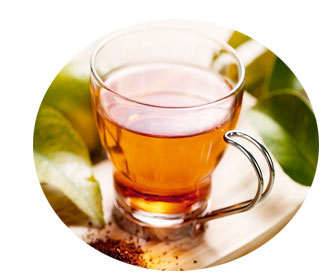 You should use the flowers and leaves to experience its effects. You can buy Passiflora incarnata and caerulea from an online herbal store or a shop specializing in medicinal products. The steps to prepare a passionflower infusion are:
You should use the flowers and leaves to experience its effects. You can buy Passiflora incarnata and caerulea from an online herbal store or a shop specializing in medicinal products. The steps to prepare a passionflower infusion are:
- Heat water in a teapot, microwave, or saucepan.
- Remove it before it starts boiling.
- Add a tablespoon of passionflower (caerulea or incarnata).
- Let it steep for 5 minutes.
- Strain and pour the contents into a cup or glass.
Now you know how to prepare a passionflower infusion. Just wait a few minutes for it to cool slightly, then drink it to relax and sleep well.
- Valerian.
- St. John’s Wort.
- Thyme.
- Hawthorn (white and yellow).
- Linden.
It is quite common to take passionflower and valerian together for their relaxing effects. Both medicinal plants are excellent for calming nerves and reducing anxiety, but they can also be mixed with St. John’s Wort or hawthorn.
Passionflower and valerian
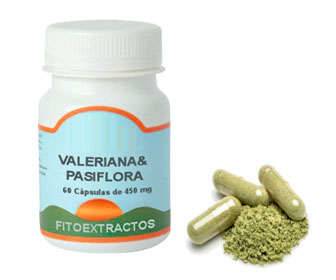 In addition to the effects already described, the mechanism of action of Valeriana officinalis should also be considered. This plant is well known in herbal stores and among health professionals accustomed to treating anxiety disorders. Sold under the name valerian, it is effective for treating anxiety and helping with sleep at night.
In addition to the effects already described, the mechanism of action of Valeriana officinalis should also be considered. This plant is well known in herbal stores and among health professionals accustomed to treating anxiety disorders. Sold under the name valerian, it is effective for treating anxiety and helping with sleep at night.
A simple way to enhance the effects of both plants is to take them together. Both valerian and passionflower are effective for the same conditions. Whether in drops or pills, they help prevent seizures, eliminate insomnia, and provide anxiolytic properties.
Taking it with linden
It is also common to include it in linden infusions. Just like Valeriana officinalis, linden has sedative and anxiolytic properties, making the combination effective for calming nerves. Both plants work well when taken in moments of restlessness or agitation. They are suitable for both men and women.
With St. John’s Wort
Although they are often taken together, their effects are different. St. John’s Wort has benefits for depression. Its active compounds and pharmacological effects should only be used when not taking antidepressants.
Hypericum perforatum is used as an alternative to traditional medical treatments, though always under medical supervision. In cases of mild depression, it is useful because the dosage can be adjusted and has a less disruptive effect on behavior than some pharmaceuticals.
Is it better to take passionflower in drops or in tablets and capsules?
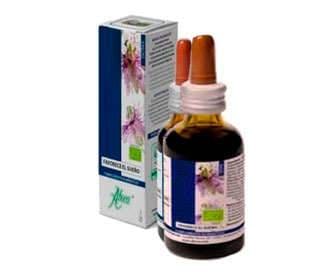 In reality, it should not make much difference, as the effect on the body and digestion is similar. Passionflower in drops has the advantage of eliminating plant matter, containing only a liquid medium to preserve the active ingredients, unlike tablets. Tablets are made from crushed leaves and flowers. Some individuals may experience mild side effects from chlorophyll and other plant compounds.
In reality, it should not make much difference, as the effect on the body and digestion is similar. Passionflower in drops has the advantage of eliminating plant matter, containing only a liquid medium to preserve the active ingredients, unlike tablets. Tablets are made from crushed leaves and flowers. Some individuals may experience mild side effects from chlorophyll and other plant compounds.
However, for most people, it does not affect gut or stomach health, and the drops are very convenient to take. You can add the dose to another infusion or mix it with liquids such as soy milk, juice, or any other beverage.
The disadvantage of passionflower drops is that they tend to be more expensive than infusions. Additionally, the extraction or tincture process must be carried out using cold mechanical methods to avoid losing some of the plant’s properties and benefits due to heat.
Is it safe for children?
One of its advantages is that both adults and children can take it. The difference is that the dose of passionflower or passion vine must be reduced for children, but otherwise, its therapeutic action and effects on the nervous system remain the same.
If you are purchasing or ordering it for home delivery, check the dosage recommendations for different ages. It is important not to exceed the recommended amount. It is highly advisable to consult a pediatrician beforehand in case of any contraindications. Alkaloids are generally recommended to be avoided in early childhood, and passionflower contains them.
Passionflower dosage
- Adults: 30 drops, 2 to 3 times per day.
- Passionflower dosage for children over 5 years: 10 drops.
- For children over 2 years: 5 drops.
- Babies over 6 months old: 2 to 3 drops.
- Infusion: Add 0.5 to 2 g per glass.
- Tincture: 20 to 30 drops per dose (similar to drops).
- Tablets and capsules: Take 1 to 2 tablets per dose. Repeat two or three times a day.
Dosages are calculated based on average body weight by age. The best approach is to calculate the amount based on weight, making it more precise for each child, adult, or elderly person.
In all cases, the dose should be taken two or three times a day. Depending on the level of agitation and anxiety, the amount can be reduced to a single dose or increased to three. Typically, it is taken with breakfast, lunch, and dinner.
How long should a natural sedative be taken?
Currently, there is no set duration for passionflower treatment. Each case is different, and the person’s condition and response to the plant must be taken into account.
It is important to remember that all natural tranquilizers, sedatives, and plants with relaxing effects can lead to dependence or, at the very least, cause a rebound effect if used continuously for an extended period.
Rebound effect when stopping daily dosage
It is quite common for individuals who have become accustomed to taking passionflower to experience some nervousness in the days following cessation. This happens because the CNS (central nervous system) remains more relaxed under the effects and properties of passionflower. When the body no longer receives its daily dose, it tends to return to previous levels of excitation.
To avoid passionflower side effects after long-term use, it is best to reduce the dosage gradually. For example, if you were drinking three infusions daily, reduce it to two, then one. The final step would be stopping it completely over a period of five to ten days.
In the case of the rebound effect—one of the side effects of Passiflora caerulea and incarnata in tablet or capsule form (or any variety)—the number of doses should be decreased. Go from taking it three times a day to twice, keeping the last dose at night to ensure good sleep. Finally, for two to three days, take only half the usual dose at night before stopping completely.
This method of discontinuing natural tranquilizers and medicinal plants with anxiolytic properties can be applied to all plants with sedative and sleep-inducing effects.

